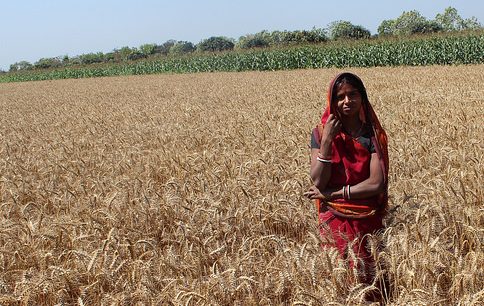
More than 122 million people could be thrown into extreme poverty by 2030 from climate change induced by global warming, mostly in Africa and Asia.
Agriculture is one of the largest contributors to global warming, with greenhouse gas emissions predicted to rise 30 percent over the next three decades due to rising populations and changing consumer preferences to high-emission foods like dairy and meat in these two regions.
India alone is the third largest emitter of greenhouse gasses in the world, with agriculture contributing the most greenhouse gas emissions in the country after electricity. With a population of more than 1.3 billion and increasing, ensuring sustainable agricultural development is critical to achieve the country’s 2015 climate plan to reduce emissions intensity 35 percent by 2030 and food security for the region.
In a recent study, we analyzed how cereal farmers in India’s Indo-Gangetic Plain – an area that feeds 40 percent of the country’s population – manage their crops and the impact different practices have on yield and emissions.
Reducing nitrogen fertilizer can cut emissions without compromising yield
Nitrogen fertilizer is a huge greenhouse gas emitter. Creating it involves burning a lot of fossil fuel, and is produced primarily using natural gas. When farmers apply it to their fields, rain washes much of it into surrounding bodies of water, while bacteria in the soil feed on what’s left, releasing a powerful greenhouse gas called nitrous oxide.
16 million tons of nitrogen fertilizer are currently being applied by Indian farmers to their fields. Our research shows that farmers in India can reduce emissions and increase yields through better nitrogen management.
Culture and economics have a huge impact on emissions and yields
We also found various cultural, economic, household and other social factors significantly determined whether farmers adopted low-emission technologies.
For example, households with high levels of education, large land holdings and access to agricultural advisory, as well as farmers who received training on climate change, were likely to adopt zero tillage, a practice that retains soil moisture, builds up nutrients and decreases greenhouse gas emissions.
Other farmers who received training on climate change along with crop, soil, water and seed management, and those having access to agricultural credit tend to adopt low-emission technologies such as split application of nitrogen and use of farm yard manure.
Overall, capacity building that increases farmers’ awareness and skills in agriculture and climate change contributes to increased production and reduced emission intensity for all households. Farmers’ societies, farm cooperatives and local non-governmental organizations can therefore play a vital role in encouraging farmers to adopt appropriate low-emissions practices and technologies.
Government action needed for low-emission agriculture in India
Knowing the impact of various social drivers and low-emission strategies, particularly the decrease of nitrogen fertilizer use, on agricultural development can help increase production and reduce emissions nationwide.
State and local governments must integrate policies and technology that enhance farmer access to new innovations like zero tillage and irrigation, and provide more information on efficient residue, farm manure and nitrogen fertilizer management. The government must also adopt multiple approaches that include targeted subsidies for sustainable technologies like zero tillage machinery and precision land levelers, mobilize local civil society organizations to increase knowledge about low-emission practices and use information communication technology to increase awareness and access to information about sustainable agricultural practices.
Most importantly, all mitigation-related interventions require investment decisions at the household level. Family and farm size, the gender of household head and many other factors rare critical to take into account in each intervention to successfully scale out low-emission practices and technologies.
 Capacity development
Capacity development 
